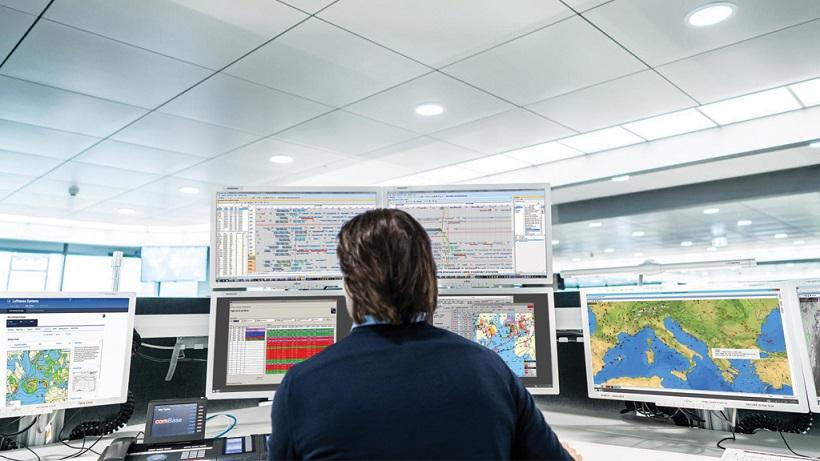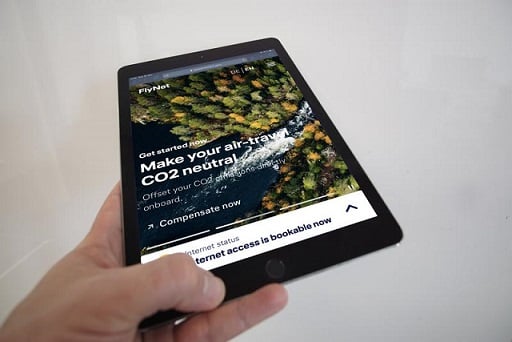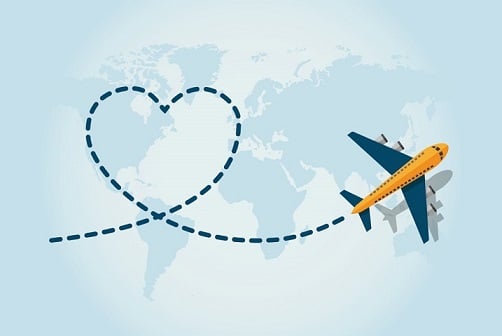Aviation's Enhanced Tech Response To Charting A Sustainable Flight

The Aviation Industry celebrated for global connectivity and economic prowess, now faces scrutiny for its substantial carbon footprint. Sustainability has evolved into a cornerstone, driving innovation and change within aviation. Every flight, while fostering mobility and commerce, releases significant CO2 into the atmosphere, amplifying the climate crisis. The industry strives to curtail this impact, aligning with climate targets through novel solutions that merge technology, innovation, and sustainability.
The aviation industry, known for connecting the world and propelling economies, is also increasingly recognized for its significant contribution to global carbon emissions. The imperative of sustainability has thus become a cornerstone of the aviation sector, driving innovation and transformation. Each flight, while enabling mobility and trade, emits a substantial amount of CO2 into the atmosphere, contributing to the climate crisis. To address this, the industry is on a quest to reduce its carbon footprint, seeking ways to align with international climate targets and limit its impact on the environment. With the realization that the status quo is untenable, the aviation sector is embracing novel solutions that synergize technology, innovation, and sustainability.
High Altitude Emissions: A Critical Challenge
The aviation industry is responsible for about 2-3% of global CO2 emissions. While its carbon emissions are relatively small compared to some other sectors, its rapid growth, high-altitude emissions, and symbolic importance make it a focal point in global efforts to combat climate change. A typical long-haul flight can release around 1 tonne of CO2 per passenger, and when considering the number of passengers, the total emissions for a single flight can be quite significant, highlighting the urgency of addressing aviation's environmental impact.

Progress and Challenges of Sustainable Aviation Fuel
While the concept of sustainable aviation fuel (SAF) holds immense promise, its implementation is still in its nascent stages. SAF, produced from renewable sources like algae, waste oils, plant-based feedstocks, and non-biogenic sources like Power-to-liquid (Ptl) and sun-to-liquid (Stl), has the potential to significantly reduce aviation's carbon emissions. However, the Asia-Pacific (APAC) region is facing an uphill battle in realizing the full potential of SAF. These include ensuring a consistent and diverse supply of sustainable feedstock, lowering production costs, and investing in critical infrastructure upgrades to support SAF production and distribution. Furthermore, the region's vast and diverse geography, combined with APAC's rapid growth in aviation, presents unique logistical and scaling-up challenges. In this dynamic region, where aviation is on the rise, realizing SAF's full potential will necessitate collaborative efforts and strategic initiatives to bridge this gap.
A New Horizon for Digital Transformation
Amidst the complex challenge of realizing the full potential of SAF, digital transformation is emerging as a game-changer in aviation sustainability. Leveraging cutting-edge technologies like artificial intelligence, data analytics, and real-time insights, digital transformation has the potential to revolutionize operational efficiency and reduce CO2 emissions. By optimizing flight routes, minimizing fuel consumption, and enhancing maintenance processes, digital transformation presents a pathway to greener skies.
Innovative IT Solutions: Lido Flight 4D
At the heart of this transformation lie innovative IT solutions like Lufthansa Systems’ flight planning software, Lido Flight 4D, which uses the Lido Optimizer VOLAR Algorithm to optimize flight paths with the goal of minimizing environmental consequences by avoiding non-CO2 effects such as contrails. While CO2 emissions are widely acknowledged as a key contributor to aviation's climate impact, non-CO2 effects such as contrails, nitrous gases, and soot also play a significant role in the overall climate impact. It is critical to address these non-CO2 consequences if we are to achieve sustainable air travel.
The Lido Team at Lufthansa Systems recently launched the D-KULT research initiative with the goal of minimizing flight paths' non-CO2 effects. The goal is to eventually reduce the climate impact of air travel by considering and minimizing these consequences.
This advanced flight planning software stands as a beacon of hope in the pursuit of sustainable aviation. By meticulously analyzing data, weather patterns, and real-time conditions, Lido Flight 4D empowers airlines to chart optimal flight paths that reduce fuel consumption. This optimization, in turn, leads to a reduction of up to 2% in CO2 emissions. With over 50% of civilian passenger and cargo aircraft in Europe and 25% worldwide relying on Lido Flight 4D, its impact is both substantial and far-reaching.

Carbon Tax and Government Initiatives
Governments are pivotal players in the quest for sustainability. Singapore, for instance, has taken the lead by implementing a carbon tax in 2019, setting an example for the region. This pioneering carbon pricing scheme, the first in Southeast Asia, lays the foundation for airlines to transition towards greener practices. As Singapore's carbon tax increases over the years, airlines are compelled to adopt sustainable strategies to mitigate their emissions. In this context, digital transformation emerges as a key ally, enabling airlines to align their operations with emission standards, optimize fuel usage, and contribute to a more sustainable industry.
The Road Ahead
The journey towards a sustainable aviation future is not without its challenges. Rising fuel costs, intensifying competition from startups and low-cost carriers, and the need for operational resilience in the face of dynamic market conditions are pressing concerns. However, these challenges also present opportunities for innovation and transformation. Airlines are increasingly turning to digital technologies to navigate these complexities. By optimizing routes, enhancing fleet management, and streamlining operations, digital transformation enables airlines to mitigate challenges while driving sustainability.
Conclusion
The aviation industry is at a crossroads where technology and sustainability converge to shape the trajectory ahead. As the industry embraces digital transformation, innovative solutions like Lido Flight 4D stand as testaments to the potential of technology in reducing CO2 emissions. The commitment of governments, exemplified by Singapore's carbon tax, further reinforces the aviation sector's collective responsibility. As airlines strive to overcome challenges and seize opportunities, the vision of a greener, more sustainable aviation industry becomes attainable. The harmonious interplay of digital transformation, innovative solutions, and government initiatives sets the stage for an aviation industry that not only envisions a sustainable future but actively shapes it. Through collaborative efforts and transformative technologies, the skies of tomorrow hold the promise of reduced emissions, efficient operations, and a healthier planet for generations to come.
Learn more about Lufthansa Systems here.




